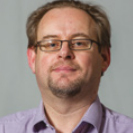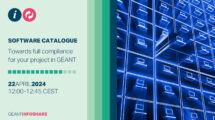Rising global temperatures. Warming oceans. Shrinking ice sheets. Rising sea levels. Retreating glaciers.
Examples of the Earth’s climate change fire alarms caused by heat trapping carbon dioxide being exponentially emitted into the Earth’s atmosphere since the mid 20th century, most likely resulting from human activity.
Royal Holloway, University of London geophysics professor Saswata Hier Majumder and his team of PhD students (Ryan Payton, Yizhou Sun and Paul Ross Thomson) are responding to the Earth’s fire alarms. They are leading the way to prevent climate change by drastically reducing atmospheric carbon emissions through carbon capture and sequestration.
Royal Holloway, University of London researchers wanted to develop a simulation that analyzes digital images of rocks and predicts their capacity to absorb carbon dioxide and organically remineralize it—a game-changing advantage for identifying suitable future carbon storage sites based on favorable geologic storage reservoirs and how much carbon the reservoirs can store over time. They envisioned a simulation engine capable of processing massive amounts of scanned real rock images captured with 3D microtomography to determine the pore volume of each rock fragment—important for identifying the carbon sequestration efficiency and capacity of future storage sites.
On-premise super computers needed the power of enterprise computing to process the very large data sets from Royal Holloway University’s 3D microtomography. Royal Holloway, University of London researchers turned to Oracle’s high-performance cloud infrastructure to develop a novel computational approach that lets the research team pick the amount of memory and threads needed to process the massive amounts of scanned images in a way that the team’s previous, on-premise computers couldn’t. This enabled the research team to more accurately predict future carbon storage site suitability in a fraction of the time and at a much lower cost than previously thought possible.







